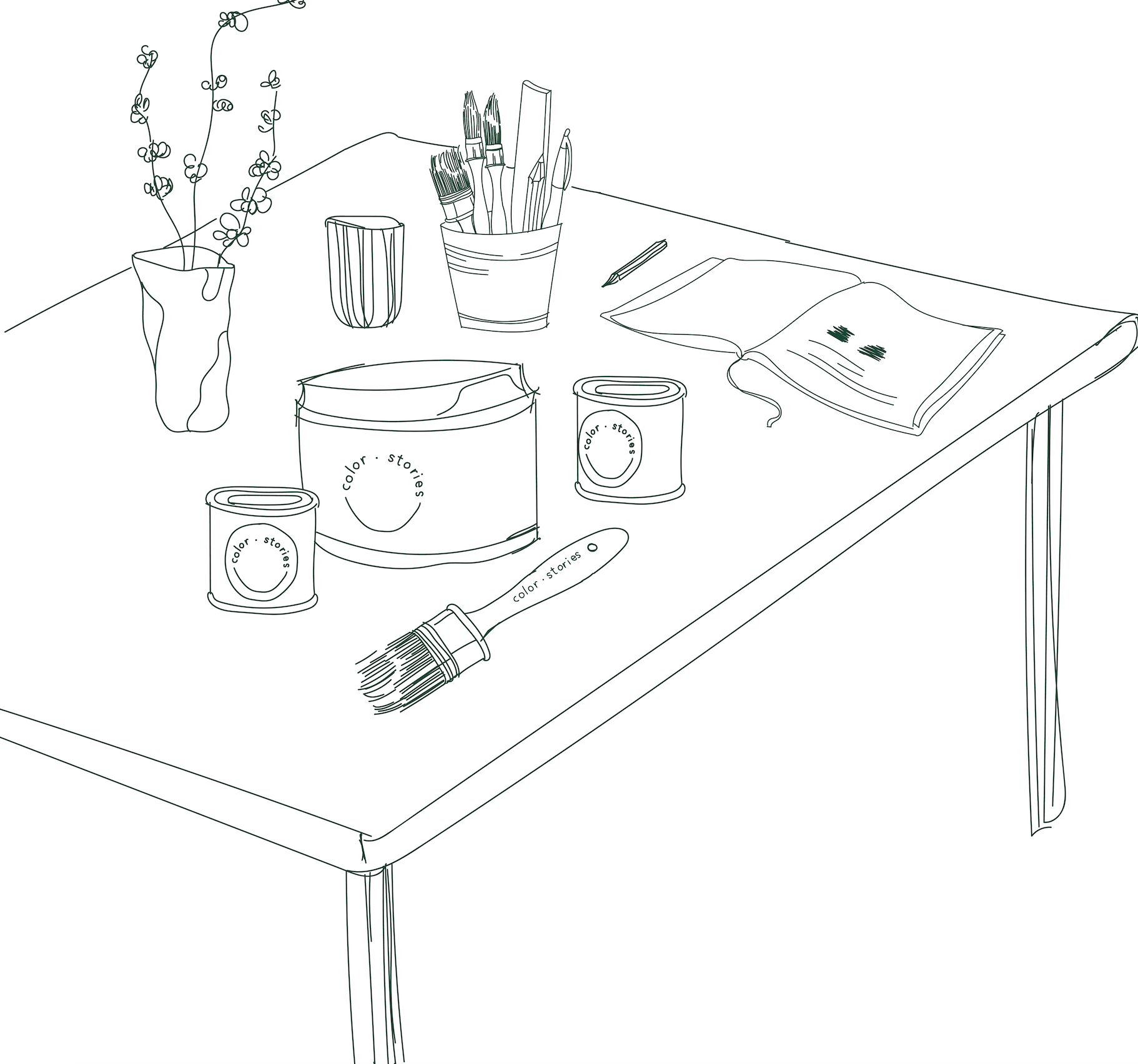Painting guide
Step 1
WHERE AND WHAT DO YOU WANT TO PAIN?
Color Stories paint has been developed so that it can be painted on several surfaces in your home. This gives the painted surface the same color nuance, mattness and strong surface. One and the same paint can be used on walls, ceilings, as well as on primed wood and metal, such as doors, cupboards, furniture, frames and radiators, but not electric radiators.
If extra durability is desired for furniture with daily wear, it is recommended to use 'Color Stories Shine Bright', which is available in all our fine colours.
Step 2
HOW MUCH PAINT SHOULD YOU USE?
8-10 m2 per l is calculated. The paint must be applied in a thin layer. We recommend that the surface be painted 2 times, thereby ensuring that the paint covers and that the result is as desired. The paint is very slow to use, so only apply a thin layer.

Step 3
ARE YOU READY TO PAIN?
It is a good idea to be well prepared before the painting work begins. It is important that the surfaces to be painted are clean, dry, grease-free and free of loose material. If there is moisture/damage/holes etc. where painting is to be done, this must be puttyed/repaired so that it is dry before the painting work begins. Likewise, it is important that rust on iron/radiator etc. is treated before painting starts. Wood and metal must be primed, and the surface of the object must be sanded quite lightly, so that the paint binds better to the surface.
SHARP EDGES:
Use masking tape to ensure sharp boundaries between 2 colors. A tip to get a perfectly sharp painting edge: Paint with the existing paint over the tape, so that you lock in the new color penetrating under the tape. When the "lock paint" is dry, you can paint. The tape is removed as soon as you finish painting and while the paint is still wet.
Step 4
DO YOU HAVE THE RIGHT PAINTING TOOLS?
The best result is achieved when you use good painting tools. Use tools designed for the item to be painted. It makes the work easier and the result is much nicer. Read more about " painting tools " under accessories.
For easier cleaning, you can advantageously place a large plastic bag in your paint container. This avoids paint in the tub itself.
STEP 5
MEASURING:
Make sure to stir the paint well with a stirring stick before starting the painting work. Start by painting at the top and work your way down. Make sure to saturate the roller and paint in a uniform thin layer. Most often, the best result will be achieved by painting 2 times, but it depends on the substrate.
STEP 6
CLEANING:
Clean the tool with lukewarm water after use, so the tool is ready for the next time it needs to be painted. If there are dried paint residues on the tool, these can be removed by placing the tool in crystal soap in a closed bag for a few days.
